Acupuncture for Hay Fever
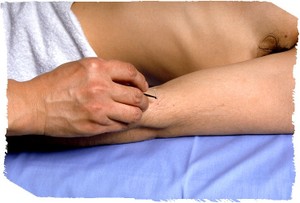
A study from Melbourne, Australia has found that acupuncture can significantly reduce the symptoms of persistent allergic rhinitis (PAR), a.k.a. hay fever. This was a randomized, single-blind, sham-controlled trial included 80 patients with PAR aged 16-70 years, who were randomly assigned to real or sham acupuncture. Three key acupuncture points, Yingxiang L.I.-20, Yintang M-HN-3 and Fengchi GB-20, plus one supplementary point (determined individually on the basis of traditional Chinese Medicine pattern differentiation) were used for each participant. After a one-week baseline period, participants were treated twice weekly for eight weeks and followed up for another 12 weeks. Nasal obstruction, sneezing, rhinorrhea and nasal itch were each self-assessed daily on a 5-point scale, and individual symptom scores were added to give a sum of the symptom scores: total nasal symptom score (TNSS). A secondary outcome was use of PAR relief medication. At the end of eight weeks’ treatment, the weekly mean difference in TNSS from baseline was significantly greater with real (-17.2) than with sham acupuncture (-4.2) and these benefits persisted three months after the end of treatment. Comparisons of relief medication scores revealed a significant decline in the use of medication in the real acupuncture group between baseline and Week 8 of treatment, the reduction being still apparent at the end of follow-up.
This research is convincing. The effect size is not enormous, and we do not know how long the effect will last, but it does suggest another approach for people who have chronic symptoms and for whom medications are ineffective, or who do not want to take medications, or have side effects from them.
It may be relevant that some years ago it was shown that needling the Fengchi point – which lies at the base of the skull at the back of the head – increases some components of cerebral blood flow. That may give us a mechanism of action of the acupuncture in this trial.
“I am pretty sure that, if you will be quite honest, you will admit that a good rousing sneeze, one that tears open your collar and throws your hair into your eyes, is really one of life’s sensational pleasures.”
–Robert Charles Benchley (American Humorist, Critic and Parodist, 1889-1945)
“The nose is for breathing, the mouth is for eating.”
–English Proverb
“Warmth, moisture, food-these are the causes that activate latent germs and arouse them to activity. They exist, all except the food, in the mouth, nose and throat at all times. The food is thrown out into these, as excretions, in disease. The germs feed on the excretions. They are scavengers. They were never anything else and will never be anything else. They break up and consume the discharge from the tissues. This is the function ascribed to germs everywhere in nature outside the body and is their real and only function in disease. They are purifying and beneficial agents. The medical profession has worked itself into hysteria over the germ theory and is using it to exploit an all too credulous public. Germs are ubiquitous. They are in the air we breathe, the food we eat, the water we drink. We cannot escape them. We can destroy them only to a limited extent. It is folly to attempt to escape disease by attempting to destroy or escape germs. Once they are in the body, the physician has no means of destroying them that will not, at the same time, destroy the patient. We cannot avoid germs. We must be proof against them. We have to accept them as one of the joys of life.”
–Herbert Shelton (English Evolutionary Philosopher, 1820-1903)
National Acupuncture Detoxification Association
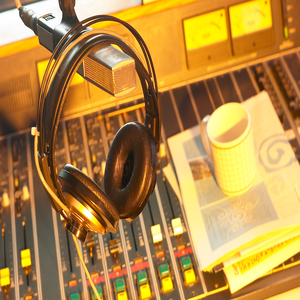
I had the pleasure and privilege of being on Scott Cluthe’s show on Lime Radio this evening. It’s on Sirius Satellite Channel 114, and if you are interested in the new holistic worldview that is emerging all over the planet, I highly recommend Scott’s show and, in fact, all the shows that I have heard on Lime. I have also had a link to Lime website for some time now, and it always has a great deal of excellent material.
There were some excellent questions from listeners, and one caused me to do some research. The question was about the National Acupuncture Detoxification Association (NADA). The Association is a nonprofit that conducts training and provides public education about the use of acupuncture as an adjunctive treatment for addictions and mental disorders.
There is a substantial body of research literature on the topic of using acupuncture as part of a package of measures for treating substance abuse, and although it is still considered controversial in some quarters, it is being used in over 1,500 places around the world, and that does not include China and Japan, where I have seen acupuncture used a great deal in addictive disorders.
My own experience has been mixed. I have had little success I treating smoking addiction with acupuncture, though I have many colleagues who say that it is extremely helpful. I have had more success in using thought field therapy and homeopathy for treating smoking addiction, even though there is so far no good research data on the use of either for smoking.
If you are interested in the use of acupuncture as an adjunctive treatment for substance abuse, the NADA website if a good place to start.
Acupuncture for Hypertension
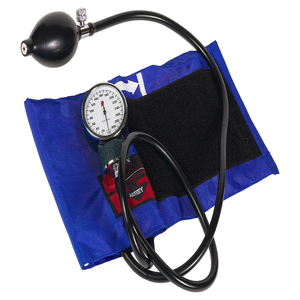
In China and Japan I have seen acupuncture used to treat just about everything, with varying degrees of success.
Researchers from Erlangen in Germany have published a randomized single blind trial comparing acupuncture with sham needling in the journal Circulation. The results suggest that acupuncture may decrease blood pressure in hypertensive patients by a similar amount to that achieved using medication.
The investigators randomized 160 outpatients (mean age 58) with uncomplicated, mild to moderate hypertension to six weeks of acupuncture performed by Chinese medicine practitioners (trained in China), or to a sham procedure. Those on hypertensive medication continued taking it.
Patients were assigned to one of four patterns of hypertension, based on TCM diagnosis. Those in both trial arms underwent 22, 30-minute treatment sessions over a six-week period. During each session, three acupuncture points were needled bilaterally for 20 minutes. In the active treatment group, the points were chosen according to traditional Chinese medical diagnosis. Sham treatment consisted of needling points that according to Chinese medical theory would have no effect on blood pressure
Twenty-four hour ambulatory systolic and diastolic blood pressures were significantly reduced from baseline in the acupuncture-treated patients (by 5.4 mmHg and 3.0 mmHg, respectively). No significant decrease was seen in the sham-treated patients. The extent of blood pressure reduction observed was comparable to that seen with ACE-inhibitor monotherapy or aggressive lifestyle changes. However, blood pressure returned to pretreatment levels within 12 weeks of treatment cessation, leading investigators to conclude that ongoing acupuncture treatments would be required to maintain the beneficial effects.
This in an interesting study, but I agree entirely with some of the comments made in an accompanying editorial by Fiona Turnbull and Anushka Patel from the George Institute for International Health in Sydney, Australia.
Randomized trials of acupuncture have been conducted since the 1970s, but many were of poor quality, and did not even include control groups. In 1995 the World Health Organization published clear guidelines for clinical research on acupuncture, which included detailed information relating to the nature of control groups and blinding in randomized controlled trials. More recently, a National Institutes of Health Consensus Development Panel stated that the acceptance of acupuncture as a reliable therapeutic choice would depend on its evaluation using study designs that could withstand careful scientific scrutiny.
The whole issue of “sham” acupuncture remains problematic. Not only are we doing something physical. But the people administering the acupuncture know whether or not they are needling an “active” point, an even if they say nothing, they may well communicate what they are doing. There is also a more subtle point that is not raised in the editorial. A good acupuncturist does not just stick in a needle. He or she waits for the appearance of a characteristic and subjective needle sensation that tells him or her whether the needle is in the correct position.
Acupuncture studies are, simply for logistical reasons, usually fairly small and this one was no exception. And that brings us to the other point. Most forms of alternative and complementary treatment are very time consuming, and need a lot from a patient who has to show up for multiple treatments, for which he may be paying himself.
If a course of acupuncture treatment can bring about some long-term change or re-balancing in a person that might be worthwhile, but in this study the blood pressure went back up once the treatment was discontinued.
Ear Acupuncture and Knee Surgery

There is growing interest, particularly in Europe, about the use of acupuncture and acupressure in combination with conventional Western Medicine.
Researchers from Ernst Moritz Arndt University in Greifswald in Germany have reported the results of a study to see whether acupuncture would help 120 people undergoing surgery of the knee.
Their main measurement was the patients’ need for postoperative pain medication.
The patients were randomly received true auricular (ear) acupuncture at the main points that Chinese medicine says are important in treatment: the Lung, Shenmen and Knee points.
The control group had a sham procedure: they were “treated” at three non-acupuncture points on the outside of the ear: the auricular helix. The “real” and the “sham” treatments were given on the ear on the same side as the knee, before ambulatory knee arthroscopy. Permanent press needles were left in place for one day after surgery and post-operative pain was treated with ibuprofen. Pain intensity was similar in both groups at all time points, but those in the acupuncture group required significantly less post-operative ibuprofen than controls.
This fits with clinical experience and is a good first study.
Not only may this provide personal benefit for the patients, but if acupuncture can reduce post-operative costs, you can be sure that insurance companies are going to get very interested very quickly.
Acupuncture and Anxiety During Medical Procedures

Over the years I have become impressed with the increasing research on something close to my own heart: how to use the best of scientific medicine in conjunction with less orthodox approaches. And, for that matter, when each is best left on its own.
I have mentioned that a few years ago I had to have surgery for a potentially serious problem. The surgeon – widely regarded as one of the best in this neck of the woods – was stunned by the speed of my recovery.
“I have seen it with my own eyes, “ He said, “But how did you do it?”
“Well,” I said, “You are an excellent surgeon. But I also some outside help: acupressure, homeopathic remedies, qigong and three prayer groups. We call it Integrated Medicine. You may think that it’s odd, but that’s what I did.”
“Oh no,” he said, “I have been in practice for over 35 years: I trust my senses far more than I trust some graph with p values on it!”
Although anxiety has never been one of my problems, I was pleased to see two new publications on the use of acupuncture to reduce anxiety during medical procedures.
A randomized controlled study was carried out to determine whether a combination of auricular and body acupuncture is effective as an adjunctive treatment for pre-procedural anxiety and pain, in 56 patients undergoing lithotripsy (ultrasonic destruction of kidney stones). In the acupuncture group, pre-procedural auricular acupuncture was combined with intra-procedural electro-acupuncture stimulation, while in the control group both treatments were sham. Patients in the acupuncture group were less anxious pre-procedure than those in the sham group and they also used a significantly smaller amount of analgesic during the procedure than those in the sham control group. Patients in the acupuncture group also reported significantly lower pain scores on admission to the recovery room.
Meanwhile an Italian study has found that patients undergoing cataract removal are less anxious after receiving acupuncture. People underwent phacoemulsification, in which the cloudy eye lens is emulsified with an ultrasound probe, before being aspirated and replaced by an artificial lens. The procedure is carried out under topical anesthesia while the patient is awake and can therefore provoke significant anxiety. In this prospective randomized double-blind controlled trial, anxiety levels were assessed before and after surgery in three groups (no acupuncture, true acupuncture and sham acupuncture) of 25 patients. Preoperative anxiety levels were significantly lower only in the true acupuncture group. The difference in postoperative anxiety levels between the real acupuncture and no acupuncture groups was also significant.
These studies are particularly interesting in the light of a recent analysis of the published research on acupuncture and anxiety, that did not include these studies. There is not much research out there, but what we have suggests that it may perhaps help with generalized anxiety disorder. The best evidence is indeed in using it to allay anxiety before, during or after surgery, though we still need a lot more research to be sure.
I have heard people say that using acupuncture like this somehow belittles it: that an ancient and self-contained system should not become the handmaiden of Western medicine.
That is only half true. First, traditional Chinese medicine was developed at a time and placed very different from today. Human beings have changed radically in the intervening centuries. That is why acupuncturists in modern China are discovering and developing new way to treat people that do not always conform to the precepts laid down hundreds of years ago.
Second, many of us have failed to recognize the treasures in our midst. Acupuncture and acupressure are two of them. If using them together with conventional medicine is the best way for people to come to know of them, that is all to the good.
There are several other similar studies that will be coming out in the next few months, and I shall keep you informed.
Acupuncture and Peripheral Neuropathy
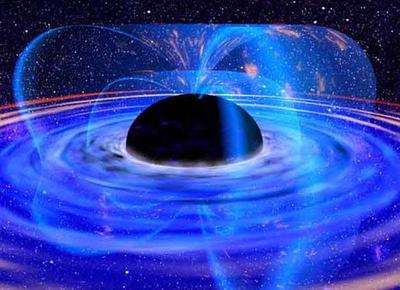
Neuropathic pain is one of the toughest problems to deal with.
I have had more relative failures in trying to help this problem than any other.
So I was very interested to see a pilot study that has evaluated the therapeutic effect of acupuncture on peripheral neuropathy (PN) as measured by changes in nerve conduction and assessment of subjective symptoms.
One hundred and ninety-two consecutive patients with PN as diagnosed by nerve conduction studies (NCS) were evaluated over a period of 1 year. Of 47 patients who met the criteria for PN of undefined etiology, 21 received traditional Chinese acupuncture, while 26 received medical care but no specific treatment for PN. 76% of the acupuncture group improved symptomatically and objectively as measured by NCS, while only 15% of the control group did so. 14% of the acupuncture group showed no change and 10% showed an aggravation, whereas in the control group 27% showed no change and 58% an aggravation. Subjective improvement was fully correlated with improvement in NCS in both groups.
These numbers are stunning. I might have some small quibbles about the way that the study was dne, but the results are impressive.
A second study compared Chinese and Japanese acupuncture for treating painful diabetic neuropathy. Both treatments improved pain, but only the Chinese style produced an objective improvement in the ability to feel in the affected areas.
These findings are remarkable: peripheral neuropathy can be a bear to treat, and according to the received wisdom, neither the pain nor the sensation should be able to get better. In the second study the patients were only treated once a week for ten weeks. In China such patients get daily treatments, and people in the West who treat neuropathy with acupuncture normally recommend treatments at least two or three times a week.
Both of these studies were small, but they are very encouraging.
If they are confirmed, we may to re-think another one of those, “Everyone knows that..” statements. This one about neuropathy: That is supposed to be untreatable and irreversible.
That is why the next set of studies will be super-rigorous,
They need to be.
If confirmed, we are going to be re-writing the textbooks.
Non-pharmacological and Lifestyle Approaches to Attention-Deficit/Hyperactivity Disorder: 10. Traditional Chinese Medicine

One of the problems when looking at research using traditional Chinese medicine (TCM) is that the Chinese medical system does not easily map onto the Western system of medicine. So while we might talk about attention-deficit hyperactivity disorder (ADHD), a Chinese medicine expert would be more interested in disturbances of qi, shen and jing in the whole person.
Most people who have done much acupuncture have seen people with attentional problems and tried to help them with acupuncture or acupressure. In traditional Chinese medicine, hyperactivity is thought to be the result of disturbance of the Shen (Mind or Spirit) that resides in the Heart. If the Shen is healthy then the mind and body of the child will be calm.
According to traditional Chinese medical pathology, there are three things that can disturb the Shen residing in the Heart:
- Heat
- Phlegm and/or
- Xu (Deficiency)
In the poetic language of the Chinese:
“If the Shen is not nourished sufficiently the child will not feel grounded and their Shen will flutter around nervously, like an agitated flame; this will be made worse if further Heat develops and rises, or if excessive Phlegm develops and obstructs the portals or orifices of the Heart to cause confusion and poor judgment.”
You see why Western doctors often have a hard time learning about Chinese medicine, and few ever comprehend its beauty and subtlety. And I say that after 26 years of acupuncture practice under my belt!
Despite the popularity of Chinese medicine, which includes acupuncture, herbs, nutrition and qigong, there are very few studies.
There have been some done in China, but often the structure of trials is different in China, where it is often considered unethical to withhold treatment, so studies rarely have a placebo arm.
A number of experts in Chinese medicine have written articles on their experience in treating ADHD.
Since there are so many people claiming success using Chinese medicine, there is an urgent need for controlled studies so that we can see how acupuncture and Chinese herbal medicine might fit in with other forms of treatment, and when to use what. As we have said when examining all the different forms of unorthodox medicine, we always have to balance the natural desire to do without medications against the havoc that can be caused by untreated or inadequately treated ADHD.
Having seen acupuncture and acupressure help some people with ADHD myself, I shall continue to monitor and report on any research reports that come out in the future.
Acupuncture and the Gag Reflex

A pronounced gag reflex can be a severe limitation to a person’s ability to accept dental care and for a clinician’s ability to provide it. It can compromise all aspects of dental care from diagnostic procedures to treatment and can be distressing for all concerned. Many things have been tried to reduce it, most without much success.
So I was very interested to see a new study showing that a skinny acupuncture needle inserted at a point that the Chinese call Chengjiang (Ren or Conception Vessel 24) which lies just below the middle of the bottom lip, is an effective method of controlling the gag reflex. Members of the British Dental Acupuncture Society took part in a patient audit. The patients had two upper dental alginate impressions taken (or attempted), one before and one after acupuncture at that point. Before the acupuncture, none of the 37 patients was able to tolerate the procedure, however after acupuncture there was a mean improvement of 53% in measures of gag severity at all stages of the impression taking process. 81% of patients were able to accept the impression taking after acupuncture.
This research will need to be confirmed in a controlled study, but this initial result does not surprise me: I have seen how effective this simple treatment can be.
And as we have said before, good dental care is not just about protecting your pearly whites. Sick teeth and gums can give you a very sick body.
Acupuncture for Temporomandibular Joint Pain

I was pleased to see that a group of researchers from Manchester in England (that’s its skyline, above!) did a double-bind randomized controlled study of twenty seven people suffering from temporomandibular joint myofascial pain (TMJ/MP), to see if acupuncture would help them.
The people in the trial either had acupuncture or something called “sham” acupuncture, using a device that was created to create a “placebo control.” The piece of equipment is called the Park Sham Device, and there has been a lot of discussion about whether it is really feasible to do “pretend” acupuncture. This study showed that it is.
The acupuncture was shown to have a greater influence on pain and movement than the “sham” treatment.
This is important: TMJ can be very difficult to treat. Last year there was a report, also from the UK, that acupuncture seemed to be effective, based on an audit of dental practices, and this study just adds to the evidence that we are accumulating.
Acupuncture for Itch
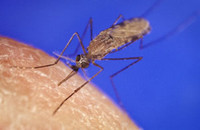
Acupuncture has been used for every conceivable type of problem, and I have often been surprised how well it can help some skin problems. I was particularly impressed by its effectiveness in treating shingles, but I have sometimes also found that it can be very helpful in treating chronic itching.
So I was interested to see a study from Bochum in Germany in which 32 healthy volunteers had histamine applied to both forearms. Histamine is the chemical that normally causes a red wheal and a flare after being bitten by a mosquito or other bug.
Then, five minutes later, they had electroacupuncture of either the right or left ear. There are specific points on the ear that are said to be good for treating itching. They then re-tested the volunteers four weeks later, but this time without the acupuncture.
Acupuncture was found to significantly reduce – and in some cases completely prevent – the areas of itchy redness, but only on the same side that had the acupuncture. So if the right ear was treated, the itch and redness was less on the right side, but not of the left.
This is an impressive demonstration of something that we have seen in clinical practice, but until now have never proven.






